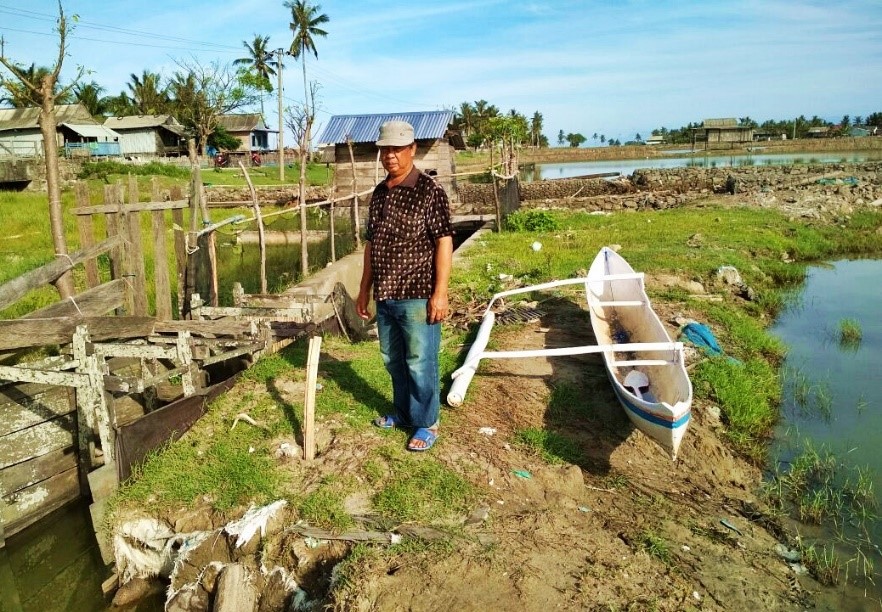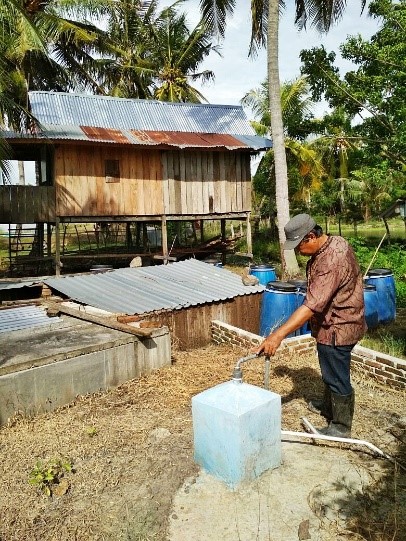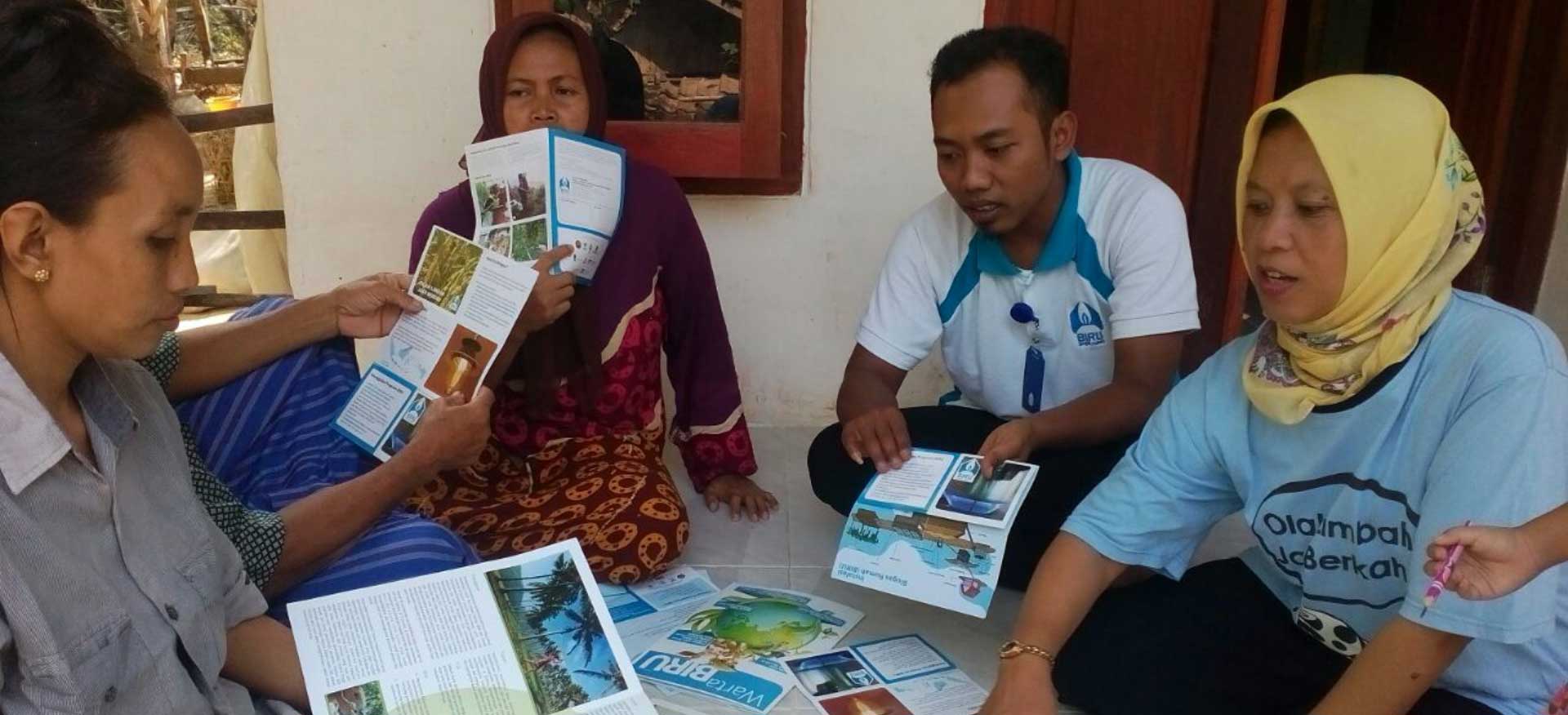Bio-slurry Utilization as Fertilizers for Shrimp and Milkfish Culture in Coastal Ponds

A middle-aged man appeared to be busy with his activities in shrimp and milkfish coastal ponds. He is H. Zainuddin, Domestic Biogas (BIRU) user. He and his wife, Hj. Arifina, together with their five children live in Langa Village, Matirosompo, Pinrang District, South Sulawesi. They have embarked with the business of coastal aquaculture since 1985 and as of today his business occupies a total of 7 hectares land.
In addition to engaging in activities in his shrimp and milkfish coastal ponds, he also raised a total of 25 cattle which he started in 2012.
Ever since he owns the cattle, he has had the desire to own a biogas reactor as he has witnessed his friend living in another village who has successfully utilized bio-slurry as organic fertilizers. However, at some point, he had to postpone his intention to build a biogas reactor as ther was someone who offered him to build a biogas reactor which is relatively expensive.

Biogas installations belonging to H. Zainuddin
Finally in 2015, BIRU Program in collaboration with Office of the Energy and Mineral Resources of South Sulawesi Province conducted socialization in Langa Village where he resides. He regained his passion to continue his desire to build a biogas reactor.
And then in 2016, his 12 m3-capacty biogas reactor finally started to being constructed and he added the cost of construction through self-financing. It is because the collaboration program offered by Office of the Energy and Mineral Resources of South Sulawesi Province required biogas users to contribute in ine with the biogas construction either in monetary form or biogas construction materials. Today he has also built a bio-slurry pit co complement the existing biogas installation.
During the early stage of his coastal pond business, he used chemical fertilizers in his coastal ponds (Urea- and NPK-type fertilizers). The use of chemical fertilizers appeared to give him a production increase annually especially during 1990s. However, as times goes by, production of his coastal ponds started to show a decline especially at the start of 2010s.
After observing the cause, he identified that the coastal ponds fertility started to dwindle. H. Zainuddin coastal ponds were not the only one to experience such conditions, other coastal ponds’ owner in the vicinity where he lives also experience similar conditions. Production levels are declining and he started to add the volume of chemical fertilizers hoping that it will restore the production output. Unfortunately, his action led to the critical condition of his coastal ponds.
He did not give up and attempted to seek different methods to regain his coastal ponds fertility. He was ultimately convinced that to restore the soil conditions he had to switch to organic materials.
In 2017, he then started to use bio-slurry as pond fertilizers for his shrimp and milkfish coastal ponds. The results were very promising. Prior to using bio-slurry, harvesting was normally done when the shrimps were 3 to 4 months old with shrimp condition which were not too good and shrimp flesh which are not too firm when touched. However, after using bio-slurry, he could harvest the shrimp when they are 2 to 3 months old with improved conditions, healthier, and the flesh that are firm.

Shrimp and milkfish coastal ponds
Similarly with the milkfish, he can now harvest the fish early and the weight of the milkfish seem to increase. The utilization of bio-slurry was finally able to improve the productivity level of the coastal ponds in a more sustainable manner.
As we are aware, both wet and dry bio-slurry are suitable as the source of pond fertilizers as well as fertilizers for other type of aquaculture. The right amount of bio-slurry will enable fish fingerlings to withstand stressful conditions thus minimize the fingerlings mortality level. Additionally, it will also enable to reduce the incidence of fish disease. (Sitti Fharidha Razak)

